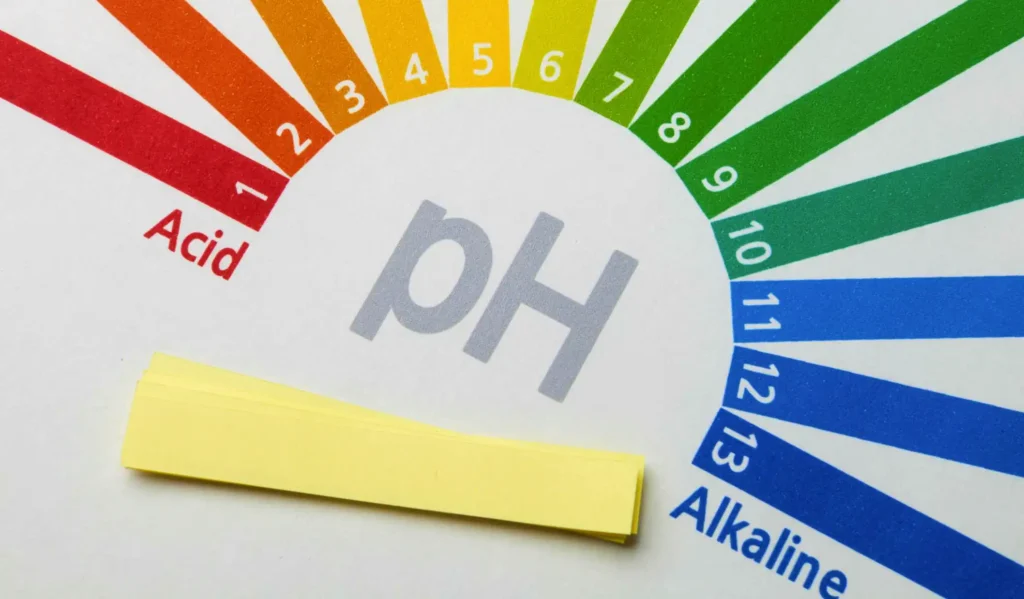Messi Biology states that in fields such as chemical industry, environmental protection, agriculture, and water treatment, precise pH regulation is a core component of many process flows. Faced with acidic environments, there is a need for a safe, efficient, and sustainable alkaline regulator. Magnesium oxide (MgO), as an important inorganic base, is gradually becoming a “star material” in pH regulation due to its unique performance advantages.

How Does Magnesium Oxide Regulate pH? Unveiling the Scientific Principle
The essence of magnesium oxide’s pH regulation is a neutralization reaction. When dispersed in water, the following reaction gradually occurs:
MgO + H₂O → Mg(OH)₂
The resulting magnesium hydroxide further ionizes to release OH⁻ ions:
Mg(OH)₂ → Mg²⁺ + 2OH⁻
These hydroxide ions combine with H⁺ in the solution, thereby reducing acidity and increasing the pH value.
Compared to common strong bases (such as sodium hydroxide), magnesium oxide’s regulation process is gentle and provides buffering: its slower dissolution and reaction rate avoid drastic pH fluctuations, and the precipitated magnesium hydroxide can also adsorb heavy metal ions, offering a purification function.
Why Choose Magnesium Oxide? Analyzing Four Application Scenarios
- Industrial Wastewater Treatment
Acidic wastewater often contains heavy metal ions (e.g., copper, nickel, chromium). Magnesium oxide can not only neutralize acidity but also co-precipitate heavy metals by forming flocculent magnesium hydroxide precipitates, simultaneously achieving pH regulation and pollutant removal. It is particularly suitable for wastewater treatment in mining, electroplating, and metallurgical industries. - Soil Amendment
Acidic soils inhibit crop growth, and magnesium oxide can be used as an agricultural acid neutralizer. Its characteristic of slowly releasing alkalinity prevents localized over-alkalinity, while also supplementing the soil with magnesium (an essential nutrient for plant photosynthesis), achieving a dual benefit of “acid adjustment + fertilization.” - Pharmaceutical and Food Industries
In antacid medications and food additives, magnesium oxide is widely used due to its gentleness. It can neutralize stomach acid (HCl) without causing a drastic increase in gastric fluid pH, reducing the risk of side effects caused by aluminum salt-based antacids. - Environmental Protection and Energy Sectors
In flue gas desulfurization, magnesium oxide can replace some lime, reacting with sulfur dioxide to form magnesium sulfate; in digestate treatment, it can regulate the pH of the fermentation system and promote methanogenic bacteria activity. Its byproducts are often recyclable, aligning with green chemistry principles.
Technical Challenges: Purity and Activity Determine Performance
The pH regulation efficiency of magnesium oxide depends on two key indicators:
- Purity: Impurities (such as uncalcined magnesium carbonate) can interfere with reaction consistency, and calcium impurities may lead to scaling.
- Activity: Includes reaction speed and neutralization capacity, which are closely related to crystal structure, particle size, and specific surface area.
Traditional magnesium oxide products often suffer from issues such as moisture absorption leading to caking, and uneven activity, making precise control of addition difficult and potentially causing system turbidity or excessive precipitation.
Messi Biology: Technological Innovation in High-Activity Magnesium Oxide
Addressing industry pain points, Messi Biology Co., Ltd. has developed a series of high-purity, high-activity magnesium oxide products with significant technical advantages:
- Leading Purity
Through carefully selected hydromagnesite ore and a closed-loop calcination process, product purity can reach over 99.5%, with extremely low impurity content, particularly controlling calcium and chloride ion levels to avoid introducing secondary pollution during the adjustment process. - Controllable Activity
Utilizing nanotechnology and surface modification techniques, they produce magnesium oxide powders with adjustable particle sizes ranging from 500 nanometers to 5 micrometers. Nanometer-grade products have a higher specific surface area, leading to faster reaction speeds; micrometer-grade products are suitable for applications requiring slow release. - Application Customization
Developing specialized models for different scenarios:- Environmental Grade: High activity, high settling performance, suitable for wastewater treatment.
- Agricultural Grade: Contains slow-release coating with trace elements, tailored for soil amendment needs.
- Pharmaceutical and Food Grade: Complies with USP/FCC standards, purity over 99.9%, excellent safety.
Future Outlook
As environmental requirements become stricter and demand for precise control increases, the application of magnesium oxide in pH regulation will further expand. Messi Biology Co., Ltd. is currently developing “intelligent responsive magnesium oxide materials” that can automatically adjust their activity within specific pH ranges, potentially providing innovative solutions for biomedicine and high-end manufacturing in the future. Although magnesium oxide may seem ordinary, it demonstrates unique value in pH regulation—unlike strong bases, which react violently, it guards the secrets of acid-base balance in a calm and lasting manner. This achievement is a testament to the combined efforts of materials science and corporate innovation.
